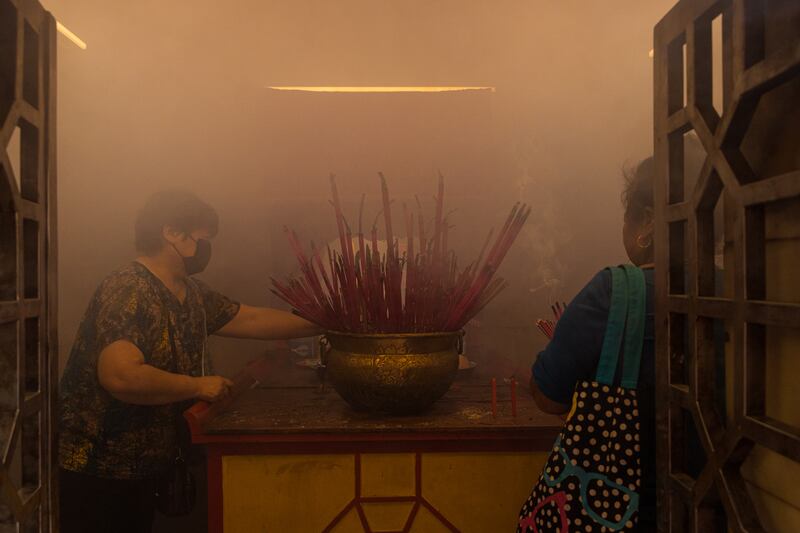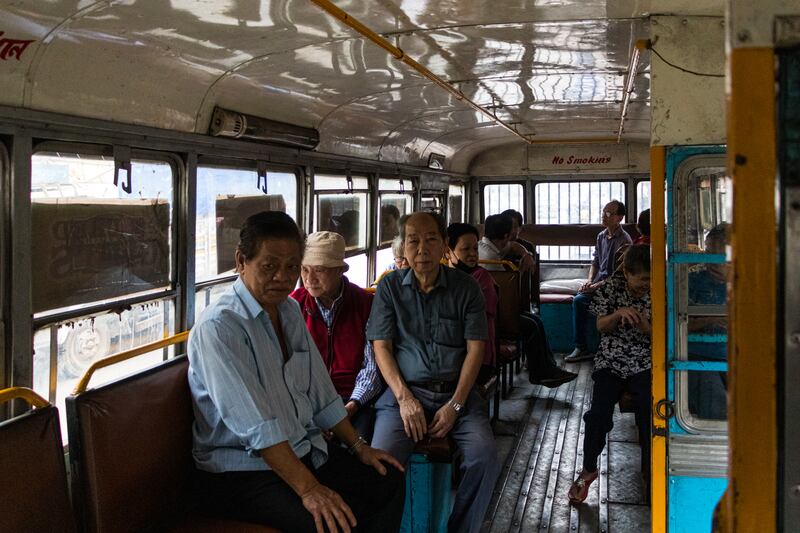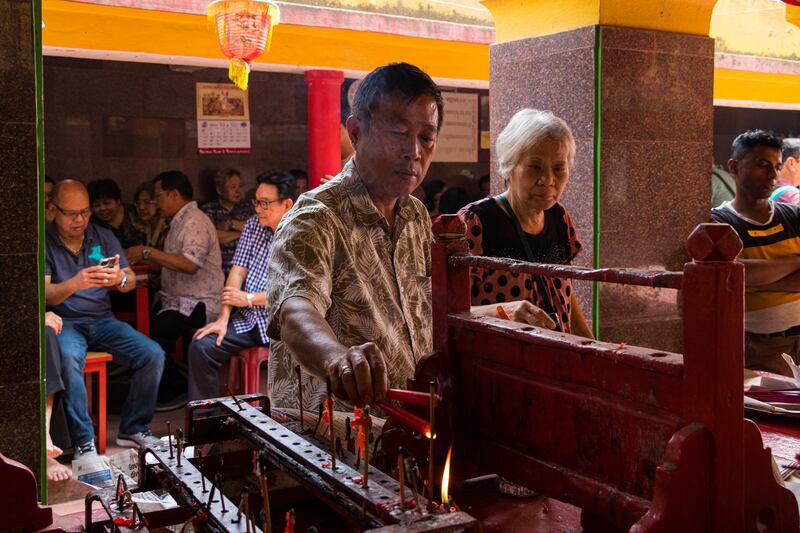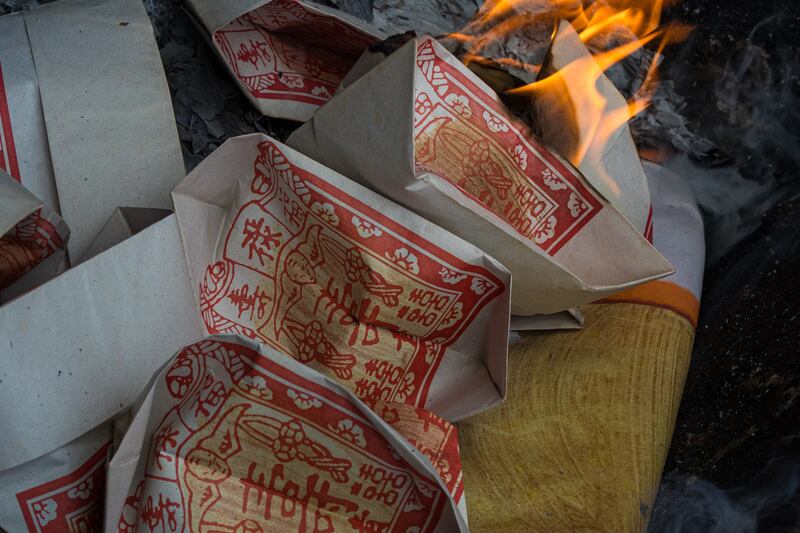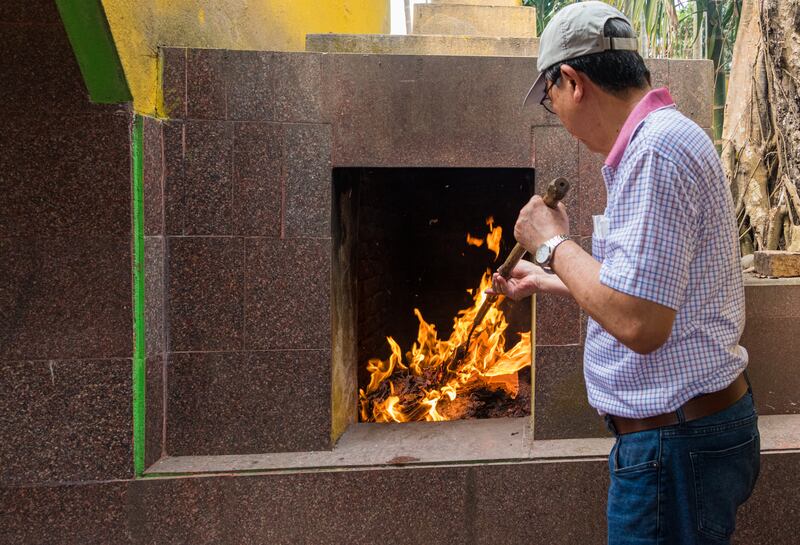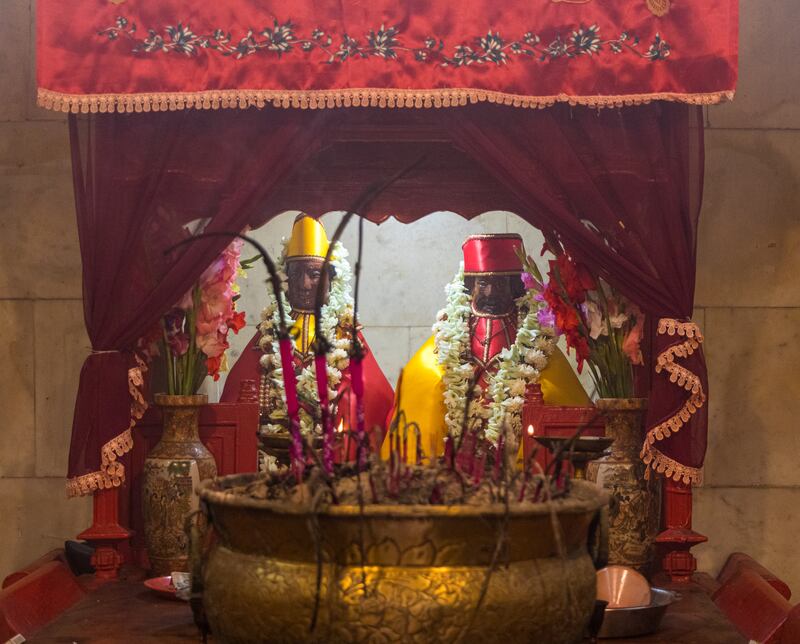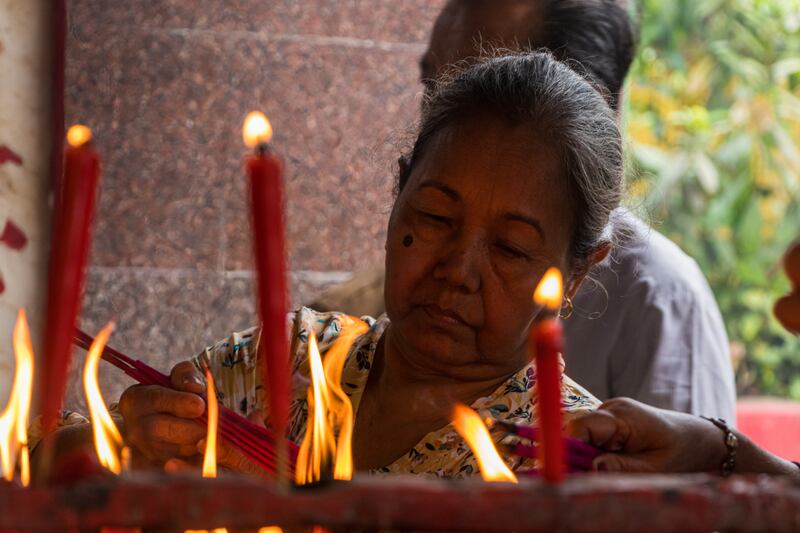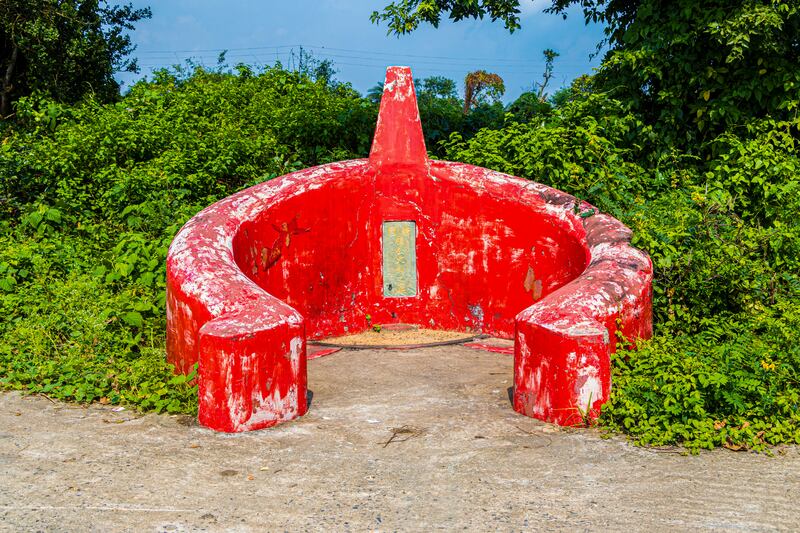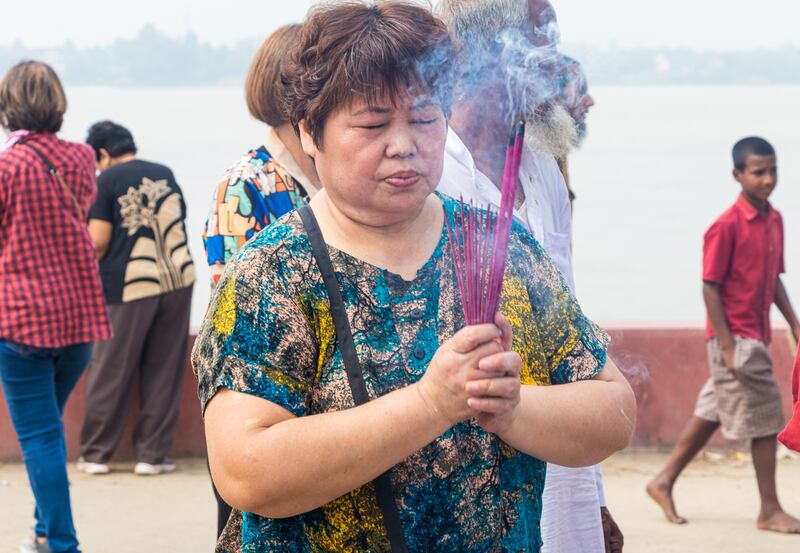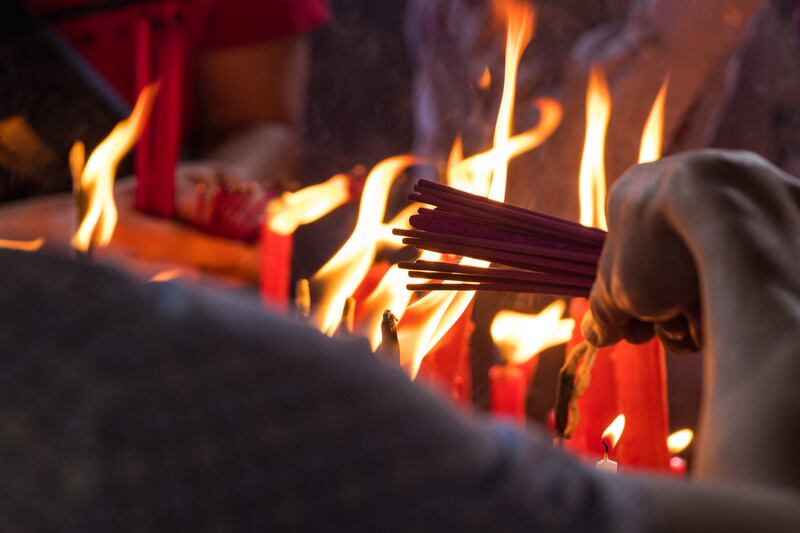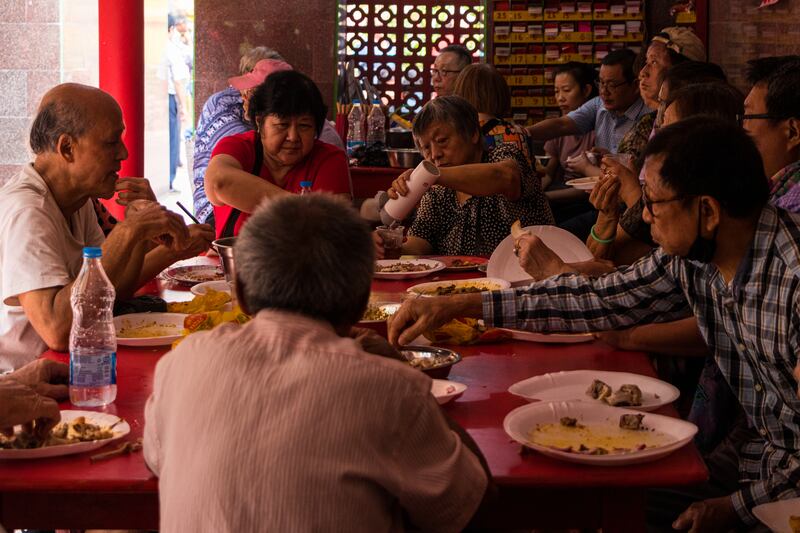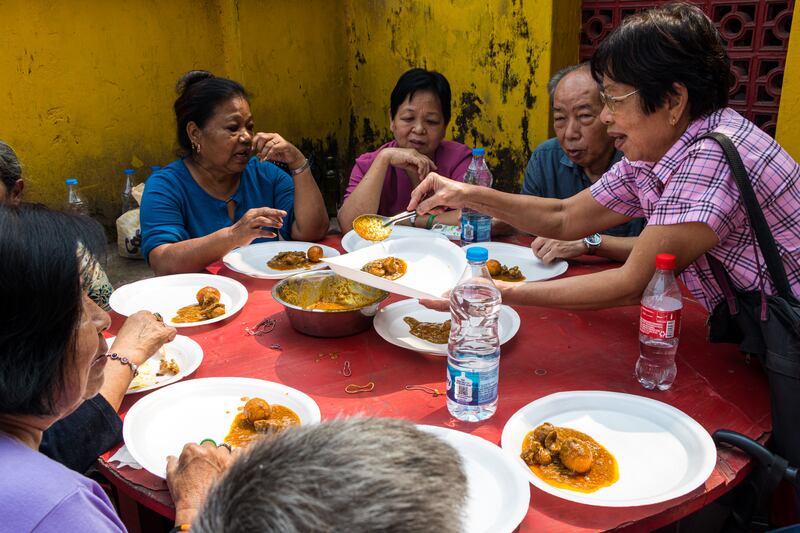A rickety blue bus commonly seen ferrying people in the eastern Indian metropolis of Kolkata carefully manoeuvres its way through a narrow road lined with small shops and curious eyes. It stops before a temple dedicated to the Earth god and goddess in the south-west suburb of Achipur.
Primarily middle-aged and older people get off the bus and saunter into the main temple area. Large aluminium containers and cardboard boxes are unpacked and roasted meat, eggs, vegetables and fruits are laid on wooden tables in the temple courtyard. The pilgrims then light red candles and burn incense sticks — one for themselves, three for their family — and burn symbolic paper money to ensure that the deceased's spirit has sufficient means in the afterlife.
In the sanctum sanctorum, thick white smoke from burning incense clouds the idols. The smoke appears to sting the pilgrims' eyes and they struggle to say their prayers. The ringing of the bell and beating of the drums by Farooqul Haq, a caretaker at the temple, occasionally punctuates the silence.
This was the scene at the recent Achipur pilgrimage, a one-month event that takes place annually between Chinese New Year and February 21 — the birthday of Tong Atchew, said to be the first Chinese settler in India, having arrived in 1778.
Earlier in the day, the bus carrying about 60 Chinese-Indian pilgrims set out from the congested streets of the central Kolkata neighbourhood of Tiretti Bazaar, famous for its Chinese temples and food.
It travelled 33 kilometres, running almost parallel to the Hooghly river, past the open, green centre of the city and on to narrow roads filled with potholes and dust. It takes more than 90 minutes to reach the destination and a few extra minutes to carefully navigate the narrow street where the temple stands.
After venerating the Earth god and goddess, the pilgrims proceed to the banks of the Hooghly river to light more candles and incense in front of a red horse-shoe-shaped tombstone, the symbolic resting place of Tong Atchew, said to be the first Chinese settler in India. The river washed away the original grave.
By about mid-afternoon, the food offered to the gods and ancestors is neatly chopped and arranged on plates. Some pilgrims lay out cotton sheets and enjoy a hearty feast on the grassy land adjoining the temple. Others crowd around tables under a shed and savour their meal.
The pilgrimage begins
The history of the Chinese-Indian community begins with the arrival of Atchew on the banks of the Hooghly river in Achipur. According to colonial records, in 1778 the Chinese immigrant applied to the colonial government for land in Bengal to set up a sugar mill.
Atchew brought in Chinese contract labourers to work on his mill. Local Bengali people called Atchew "Achi", and with time the place where he built his mill became known as Achipur.
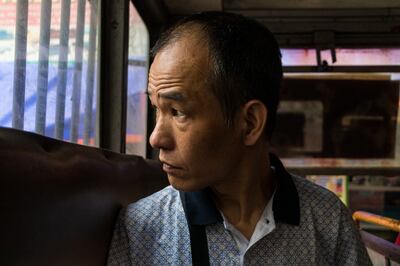
Atchew, also known as Yang Dazhao, was the ancestor of the other Chinese communities that would later spread across South Asia. A shared identity thus emerged among the various Chinese communities that arrived in the region during the 18th and 19th centuries.
After Atchew's death, the mill closed down and the Chinese settlers moved to the Tiretta Bazaar area of Kolkata, the capital of India under British rule, which was a hub of economic activity.
India's first Chinatown
Iftekhar Ahsan, who founded tour operator Calcutta Walks, says the British, who occupied part of the city, did not mingle much with the Bengali citizens who occupied another. But between the two distinct towns was a grey area, he says, occupied by "settlers like the Chinese, Jews, Parsis and Armenians".
He adds that being located between the two towns was lucrative. It allowed residents to conduct business with both the locals and the colonialists.
In the mid-19th century, Tiretta Bazaar became the first Chinatown in Kolkata. The neighbourhood contributed to the city's cosmopolitan nature as more Chinese families arrived from China in the 1930s and 1940s.
The pilgrims
Seated in the spacious hall of the Voi Ling Club, Chen Yao Hua, 69, president of the All India Chinese Association, reminisces about his journey to Achipur as a young boy.
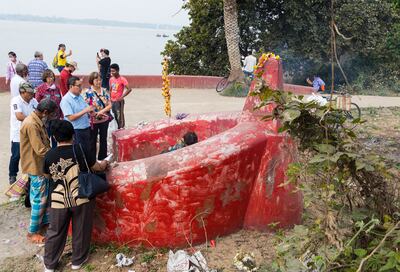
"The road to Achipur had no houses back then. Only a few huts here and there. We had to traverse the mud roads that led to the village. Most of the area was covered in dense jungle and some were open fields," he says.
There are a variety of reasons why Chinese-Indians make the pilgrimage. For some, preserving the traditions of their ancestors is a serious responsibility. Others use it as a way to connect with the broader community.
Lucy Moore, 73, a Chinese Indian lady, has visited Achipur on Atchew's birthday since childhood. "It has been 300 years since Achi appa [meaning father] stepped foot in India. We get together and enjoy spending time here. We look forward to visiting Achipur every year," she says.
Her sister-in-law Suglun Moore says for her, it is a spiritual journey. "It gives me peace."
Another pilgrim, Jo Kou, says he never visited Achipur as a child because his family felt the journey would be too rough on him. He has been making the pilgrimage for the past 10 years, and for him, it's not just about paying homage to his ancestors. "It's kind of like a picnic. It's a fun thing to do."
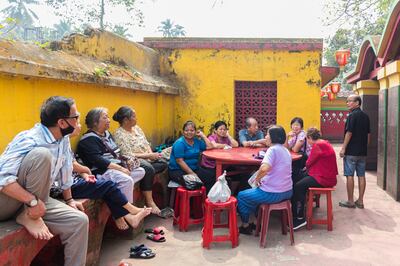
Michael Wang, 52, used to work in the Middle East, where he met his Chinese wife, whom he now lives with in Beijing with their children. He visited Achipur for the first time with his family in 2006 and still enjoys catching up with people he hasn't seen in a long time.
Sea change
Chen estimates that fewer than 2,000 Chinese-Indians live in Kolkata at present.
This change is also reflected in Achipur itself. The locals do brisk business selling food, helping pilgrims to carry objects and disposing of things on their behalf.
Sheikh Ajijul Rahman, 57, has been the temple's caretaker for decades. He now looks after Atchew's grave.
He says a few decades back, so many Chinese-Indians came for the pilgrimage that there was hardly space to move. The considerable decline in the number of pilgrims has affected him financially. "If they don't come, how will we earn extra money?"
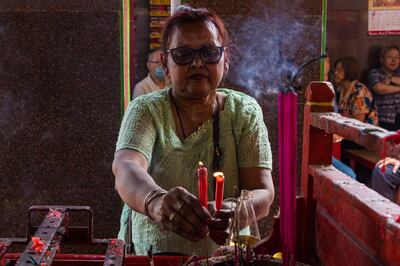
Francis Lee misses the dragon dance that used to happen on the temple premises, a compulsory event during Chinese New Year celebrations. However, he is not too concerned about the diminishing population of the Chinese community in India. He is hopeful that some will choose to stay in India.
Chinatown in Tiretti Bazaar has witnessed a sea change in recent decades. People in the Chinese community have been migrating abroad in large numbers for economic reasons. Some have taken up Catholicism and moved away from certain Chinese customs.
Keeping traditions alive
During Chinese New Year, Chen and his family celebrate by having dinner and lunch together. "I speak [to my children] about Chinese customs and encourage them to follow Chinese traditions. I try to pass on the knowledge of my ancestors to my children," he says. Chen is the only person in his family who adheres to his ancestral religion. Everyone else now follows Catholic Christianity.
The diminishing numbers have also affected the temple's upkeep. Chen says: "Earlier, there were many members of the local Chinese clubs whose donations helped with maintenance. But now, the number of members has dwindled."
Today, there are no Chinese residents in Achipur. The temple and the grave are the only reminders of a once vibrant community and their storied ancestor who dared to seek his fortune in a faraway land.
